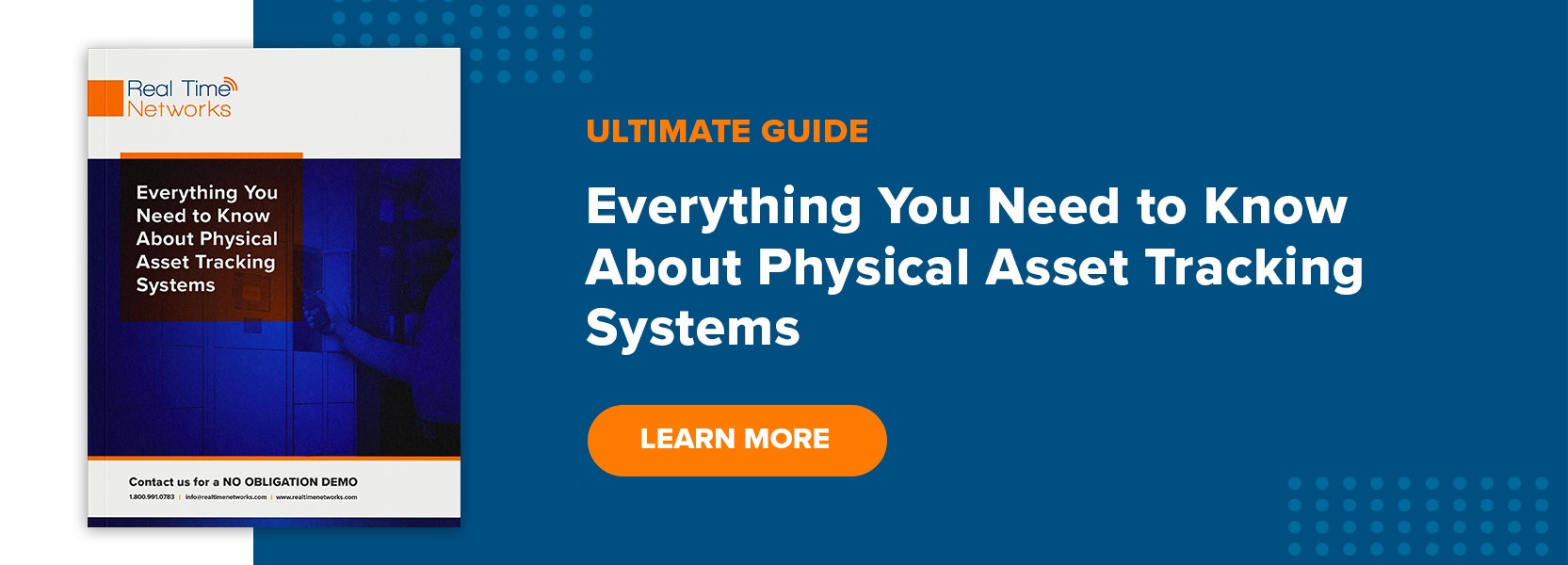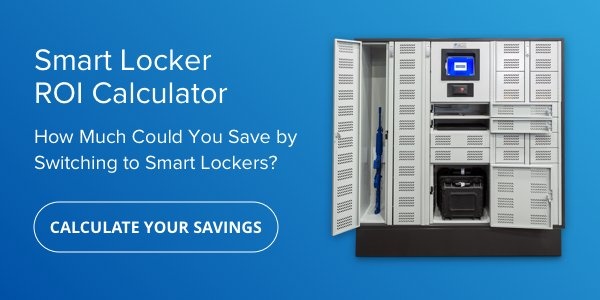By Jay Palter | April 15, 2021
Companies in many different business sectors are implementing Internet of Things (IoT)-based asset tracking systems. They have a good reason. IoT-enabled tracking offers a great deal of value for organizations whose performance depends on the use of a large volume of mobile assets and equipment.
By some recent market research projections, there may be up to 267 million active wireless asset trackers in use worldwide by 2027. It may be a popular technology, but is deploying one of these systems the right choice for your organization? We'll help you figure that out in this article.
What is IoT-based asset tracking?
IoT-based asset tracking systems are easier to understand if you break down the asset tracking and IoT components separately.
Asset Tracking
An asset tracking system improves the quality of your equipment and inventory management. These systems track assets and equipment either using antennas built into the assets or wireless tags attached to them.
Central management systems and networked storage lockers together monitor and control how workers use assets. Assets can be tracked at the time of the transaction or in real time throughout your facility using a network of real-time location service antennas.
Internet of Things
The Internet of Things is the growing network of consumer and business equipment connected to the internet through onboard wireless antennas. The primary advantage of this technology is IoT devices' ability to collect data about their own performance and the workflows of which they're a part.
Like any other complex technology, IoT-based asset tracking systems have powerful capabilities and have the potential to create new challenges if they're not deployed and used correctly. You should understand both the pros and cons of this technology if you're considering using it in your organization.
What are the pros of using IoT-based asset management?
Automation
IoT asset tracking streamlines what would otherwise be very labor-intensive and error-prone manual tasks. Just managing asset reservations and transaction logging together could take up an asset manager's entire day.
Real-time Data Collection
IoT technology makes run-of-the-mill business equipment "location-aware." It can send information about its location and how it is being used to other computer systems or human staff in real time.
As the cost for this technology drops, it puts data-gathering capabilities in the hands of SMBs that were formerly only available to large enterprises. IoT asset tracking allows organizations of any size to generate valuable business intelligence.
Asset Usage Optimization
Computer-assisted asset management allows for a much finer level of control over how equipment is used and maintained. For example, you can rotate equipment usage across an entire inventory to evenly distribute wear and tear. You can automatically lock down assets according to a preset maintenance schedule, so they're not signed out.
Performance & Use Monitoring
Detailed logging allows you to track asset usage over time and build total cost of ownership profiles for different pieces of equipment you stock. This insight can inform future purchasing decisions.
For example, tracking data might reveal that one type of handheld scanner breaks twice as much as another. Next fiscal year, you can replenish your inventory with only the better-performing model.
Workflow Support
Entirely new business processes and workflows are possible using IoT-based tracking systems. For example, you can designate maintenance lockers in your equipment storage systems.
If a user reports that a piece of equipment is broken, the system can automatically notify technicians that it requires servicing. The system then also prompts the user to deposit the asset in the specially designated locker to take it out of circulation.
What are the cons of using IoT-based asset management?
Network Security Risks
By introducing more connected IoT devices into your network, you may create more "attack surfaces" for hackers to target. IoT-enabled systems require at least as much network security administration as other IT systems do.
Lack of Standardization
IoT technology is still so new that few technical and industry-specific standards exist for it. Different devices and software platforms may not easily communicate with each other. Existing industry best practices may not account for how IoT devices need to be managed.
IoT-based asset tracking systems need to be carefully designed, installed, and secured. Despite some vendors claiming IoT technology is ready to go right out of the box, these systems require joint planning from technical staff and business leadership to be deployed and used efficiently.
Privacy & Compliance Concerns
Many industries regulate data collection and sharing. Adding IoT data-gathering equipment onto your network may increase regulatory burdens and increase the chance of costly data breaches.
To give one industry-specific example, in U.S. healthcare, if IoT devices transmit personal health information, then they must be secured according to HIPAA regulations. Regulatory fines can easily reach millions of dollars if a breach of IoT equipment exposes patient data.
What are some use cases?
One of the most significant pros of IoT asset tracking that we didn't touch on above is the technology's flexibility. It is adaptable to a wide range of different industries and individual business use cases. Here are just some of the sectors in which we've helped develop successful IoT asset management systems.
Manufacturing
Automated asset management helps track, organize, and locate all the smaller pieces of equipment manufacturing companies use. Performing all of those tasks manually—especially in the large, open spaces of manufacturing plants—can be very time-consuming.
Similarly, any company that runs its own distribution uses many handheld scanners for inventory management. Not only are those scanners expensive, but so much of the shipping process is also now digital that they are practically indispensable. The shipping process stalls if they're not available.
Those companies can use an IoT asset management system to track handheld scanners automatically. Automated tracking helps ensure those scanners are always available and charged at the beginning of shifts. If a scanner is ever not returned, notifications to supervisors help ensure they're recovered as soon as possible.
Healthcare
Tracking medical equipment helps hospitals reduce wait times and improve the quality of care. Supervising staff will always know which nurses or technicians signed out which equipment, where it is in use, and when it is supposed to be returned.
They won't have to scramble during emergency care to find a critical piece of equipment. A quick check of the asset tracking system informs staff where to find it.
Hospitality
Many hotels now use mobile apps on tablets and other electronic devices as process controls for housekeeping. They also need to track IT and AV equipment for conference rooms and convention spaces. Asset tracking helps ensure the equipment required for those tasks is always available for better guest service.
Law Enforcement
Police and emergency medical services always have a large amount of equipment to track. Police equipment purchased under federal grants usually carries a tracking and reporting requirement.
Narcotics and other regulated medications carried by EMS staff often also must be closely monitored. Tracking systems can automatically inventory and record the whereabouts of all of these sensitive assets.
Education
Educational institutions can use asset tracking systems to monitor the use of expensive electronics, such as laptops and tablets. Secure storage lockers built into asset management systems can protect and charge idle devices when they're not in use. Institutes with research labs can also use tracking systems to control access to sensitive laboratory equipment and materials.
How can IoT tracking do the heavy lifting of asset management?
Every organization will need to take a different approach to asset management. Fortunately, IoT-based asset tracking systems are flexible platforms that can adapt to many different use cases.
Automated asset management systems can streamline how any organization needs to work. They handle time-consuming tasks so employees can focus on more productive work. Asset management systems can optimize equipment use and improve employee accountability. It takes a little bit of planning to properly implement these systems, but organizations of any size will quickly see the benefits.
Do you want to learn how to implement an asset tracking system at your organization? Check out our e-book, Digitizing Process Control: A Step-by-Step Guide.
Subscribe to our blog

Jay Palter
Vice President of Marketing & Partnerships






